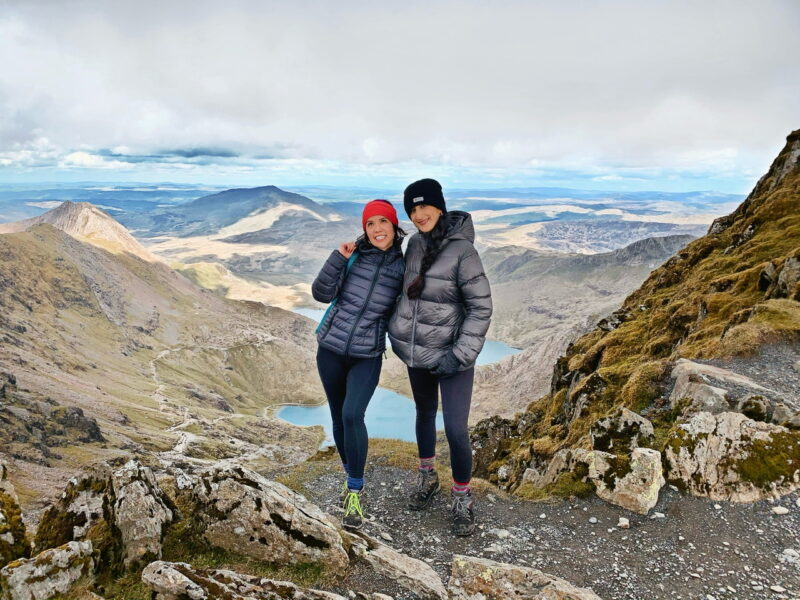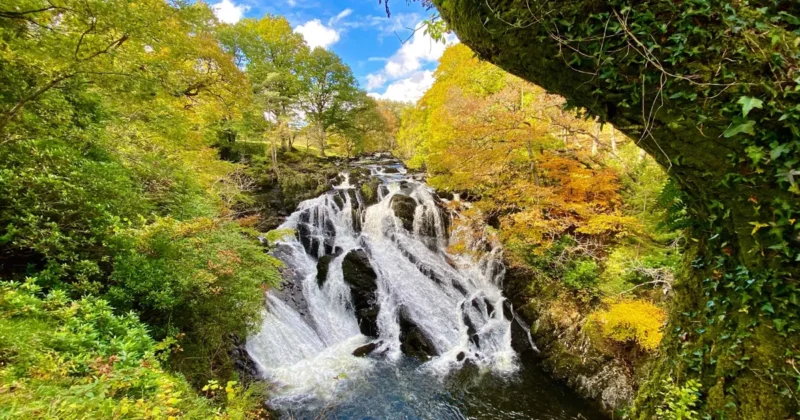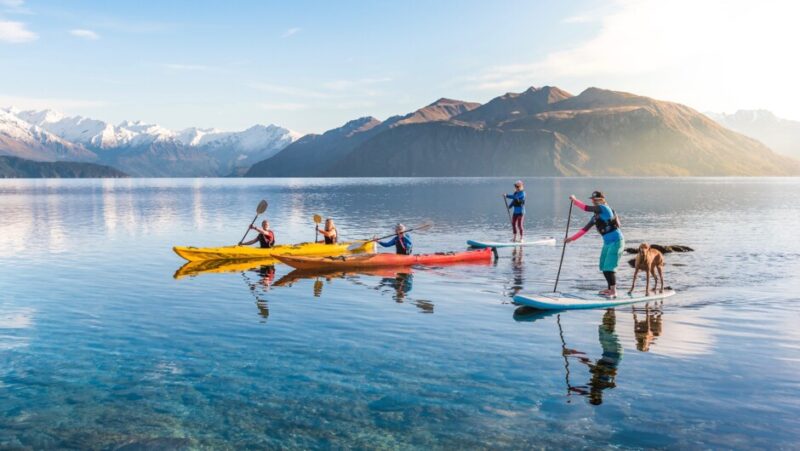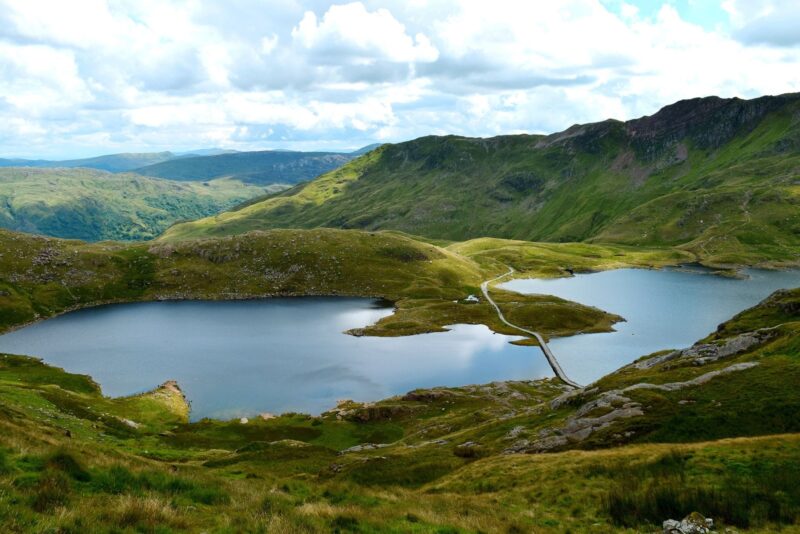Eryri, known in English as Snowdonia, is a landscape where rugged mountains, shimmering lakes, and ancient woodlands come together to create one of Britain’s most spectacular natural playgrounds. Covering more than 800 square miles in north-west Wales, this national park is a haven for walkers, climbers, and outdoor enthusiasts. Its dramatic scenery and rich cultural heritage make it a destination that combines physical adventure with a profound connection to the land.
For those planning to explore Wales on foot, Eryri offers an unparalleled variety of trails, from gentle valley walks to challenging ridge scrambles. It is a place where every path reveals something new, rolling hills that rise to jagged peaks, or hidden waterfalls cascading into tranquil pools. For detailed guidance on routes and highlights, resources such as this Snowdonia hiking guide provide an excellent starting point.
Climbing Yr Wyddfa (Mount Snowdon)
At the heart of Eryri stands Yr Wyddfa, the highest mountain in Wales and the most climbed peak in the UK. Towering at 1,085 metres, it draws thousands of visitors each year, from novice walkers to seasoned mountaineers. What sets Yr Wyddfa apart is the sheer variety of routes leading to its summit.
The Llanberis Path offers the gentlest ascent, winding steadily upwards and allowing walkers to take in the surrounding scenery at a measured pace. By contrast, the Pyg Track and Miner’s Track are steeper and more rugged, rewarding climbers with breathtaking views of the valleys, lakes, and crags below. For thrill-seekers, the Crib Goch ridge, a narrow, knife-edge scramble, remains one of the UK’s most exhilarating challenges, demanding courage as well as skill.
On clear days, the summit offers panoramic views stretching across the Irish Sea, sometimes as far as the mountains of Ireland. For those who prefer comfort to exertion, the Snowdon Mountain Railway provides a unique way to reach the top, ending at a summit café that makes this peak one of the most accessible high mountains in Europe.

Beyond Yr Wyddfa: Hidden Peaks and Trails
While Yr Wyddfa dominates the skyline, Eryri is home to many other peaks and ridges that provide equally rewarding experiences without the same crowds. The Glyderau range is particularly dramatic, with its jagged tors, vast boulder fields, and striking rock formations like Castell y Gwynt (the Castle of the Winds). Tryfan, with its pyramid-shaped summit, has long been a favourite among climbers, offering hands-on scrambling routes and panoramic views from its rocky top.
To the north, the Carneddau mountains stretch across a vast expanse, creating a sense of remote wilderness. This range is less visited than the central peaks, yet it offers a feeling of solitude and the chance to encounter herds of wild ponies that still roam the hillsides. In the south, Cadair Idris rises majestically above glacial lakes, its slopes steeped in folklore. Welsh legend claims that anyone who spends a night on the summit will either wake as a poet or lose their sanity, an idea that adds to the mountain’s mystique.
Each of these ranges has its own character, ensuring that even seasoned walkers can return to Eryri and find new trails, perspectives, and challenges to enjoy.
Lakes, Waterfalls, and Forest Walks
Eryri is not just about its summits. Its valleys, lakes, and woodlands offer routes suitable for all abilities. Llyn Idwal, nestled beneath the cliffs of the Glyderau, provides one of the most accessible yet dramatic walks in the park. The circuit around this lake is relatively short, but the setting, ringed by towering crags and glacial features—makes it unforgettable.
Nearby, Aber Falls tumbles dramatically into a wooded gorge, especially impressive after heavy rain. It is among the most beautiful waterfall walks in Wales, accessible to families and casual walkers.
The Coed y Brenin Forest Park offers another side of Eryri’s beauty, with miles of trails winding through vast conifer plantations. The park is renowned for its mountain biking, but walkers can also enjoy its rivers, bridges, and wildlife. In autumn, the changing leaves transform the forest into a patchwork of golden hues. For those in search of tranquillity, smaller lakes such as Llyn Dinas and Llyn Gwynant provide peaceful waterside spots ideal for picnics, photography, or simply enjoying the stillness of nature.

Culture on the Trail
What makes walking in Eryri truly distinctive is the presence of Welsh culture woven into the landscape. Place names carry meanings that reflect history, mythology, and the natural world. Cadair Idris translates as “Idris’s Chair,” a reminder of the legendary giant said to have once used the mountain as his seat.
Villages within the park, including Betws-y-Coed, Beddgelert, and Llanberis, offer more than just accommodation. They are centres of Welsh language and tradition, with pubs and cafés that welcome walkers and celebrate local heritage. Beddgelert, for instance, is famous for the legend of Gelert, the faithful hound, while Llanberis has long been associated with quarrying history as well as mountain culture. These towns and villages highlight that Eryri is not only about landscapes but also about living communities that continue to shape and preserve Welsh identity.
Outdoor Adventures Beyond Hiking
While hiking remains at the heart of Eryri, the national park caters to a broad spectrum of outdoor pursuits. Mountain biking trails at Coed y Brenin are internationally renowned, drawing riders of all skill levels. Rock climbing and scrambling opportunities abound across the Glyderau and Tryfan, while canyoning and gorge-walking introduce visitors to Eryri’s rivers in thrilling ways.
Water sports are equally popular. Kayaking and paddleboarding on the park’s lakes provide calm, scenic experiences, while coasteering on the nearby shores of Anglesey delivers an adrenaline-fuelled adventure along sea cliffs and caves. With so many activities available, Eryri appeals not only to seasoned adventurers but also to families and those looking for something new.

Planning a Walking Trip
Visitors to Eryri will find a well-developed infrastructure that makes exploring the park accessible and rewarding. Trails are generally well marked, and visitor centres provide maps, advice, and information about local conditions. Nonetheless, the mountains demand respect. Weather can change quickly, even in summer, so preparation is essential. Sturdy boots, waterproof clothing, and a map and compass remain the basics for safe walking. For those less confident, local guides and walking tours provide expertise and reassurance.
Accommodation in the region ranges from campsites and hostels to boutique hotels and historic inns. Llanberis, Betws-y-Coed, and Dolgellau are popular bases, each with its own character and easy access to trailheads. Many visitors choose to combine walking with evenings spent in traditional Welsh pubs, enjoying local food and music after a day in the hills.
Why Eryri Leaves a Mark
What sets Eryri apart from other mountain regions in the UK is its rare balance of accessibility and wildness. Peaks and valleys are never far from villages and roads, yet the landscapes retain a raw, untamed quality that inspires awe. For those who climb Yr Wyddfa at sunrise, wander beside quiet lakes, or explore hidden ridges, the connection to both nature and culture is unforgettable.
Eryri is not just a place for physical challenge, it is also a place to pause, to listen to the wind sweeping across the ridges, and to experience the deep rhythms of the Welsh land and language. For many, the memories created here linger long after the descent is over.
Travellers who want to include Eryri in a wider journey across Britain can turn to Great British Trips, whose itineraries make it easy to combine the mountains of Wales with other highlights across the UK. Whether approached for its summits, its stories, or its sense of stillness, Eryri remains one of Britain’s most remarkable landscapes, a playground that calls visitors back again and again.

